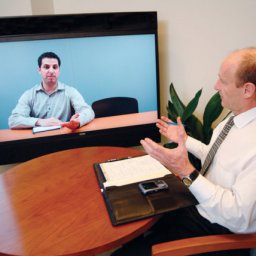Original Post by
Companies introduce new technologies to their employee base with the best of intentions.
Before every deployment of a new tool, the unsung heroes of the IT department go through a lengthy purchasing decision with several vendors vying for their business, finally settling on a solution and deftly managing the installation process. This process can take weeks if not months to complete. So you can imagine the frustration around the IT department when employees aren’t utilizing their investment.
There are several potential causes here, but they all revolve around the same problem: you have to clearly articulate the value of any new software to break your users out of their inertia and prevent them from falling back on old behaviors.
Here are a few tips for ensuring employees are comfortable closing the door on past technology and processes and moving with you toward their happier, more productive future:
Focus on the benefits, not the features
One of the most powerful tools you have in your arsenal to encourage usage isn’t the tool itself (provided, of course, that you’ve made a smart purchasing decision). It’s all in how you communicate what the tool will ultimately help your employees achieve.
How does your new social business platform make it easier for your employees to collaborate and share files without getting bogged down in email? How does your new virtual collaboration solution enable meetings with both internal and external participants as simply as picking up the phone? These benefits—the tangible, day-to-day improvements—resonate far more than any speeds and feeds conversation ever will.
The average employee doesn’t care about slightly higher resolutions or better encryption. All they’re interested in is how you’re making their jobs easier and more efficient. And don’t be afraid to bring in other departments to help; for example, use the corporate communications team to plan internal announcements or work with HR on educational initiatives.
Provide education and support
The education and support surrounding any new tool is often as important as the capabilities of the tool itself. With IT departments stretched thin as it is, you may not be able to afford to place a heavy training burden on your existing technology team. When evaluating a vendor, it’s critical to ask them about their available training materials, on-boarding processes and support avenues to ensure a seamless learning process for your employees.
Of course, if a new solution is simply overly difficult to use, you’re practically assured that your users will fall back on existing tools regardless of training collateral. Save yourself some heartburn by keeping a critical eye on user experience during your purchase process.
 Sync all systems together
Sync all systems together
With mounting pressure to do more in less time, the last thing your workers need is a new tool that adds steps to their work processes rather than integrating into existing systems and workflows. For example, without clean integrations between your collaboration and communication tools, employees are forced to visit one site for their files, another program to schedule meetings and another to keep track of their tasks and projects. What was intended to streamline communication instead becomes an exercise in juggling multiple sites. If you’re not sensitive to these issues while choosing a software solution, you may doom your deployment before it begins.
Technology is purchased with a vision, whether it’s cutting costs, improving communication, closing more deals, etc. However, if the technology isn’t being leveraged, that vision can be lost. With a carefully planned deployment, you can ensure adoption and a successful software purchase.
For more info on collaboration and technology throughout Momentum Conferencing, click here!



